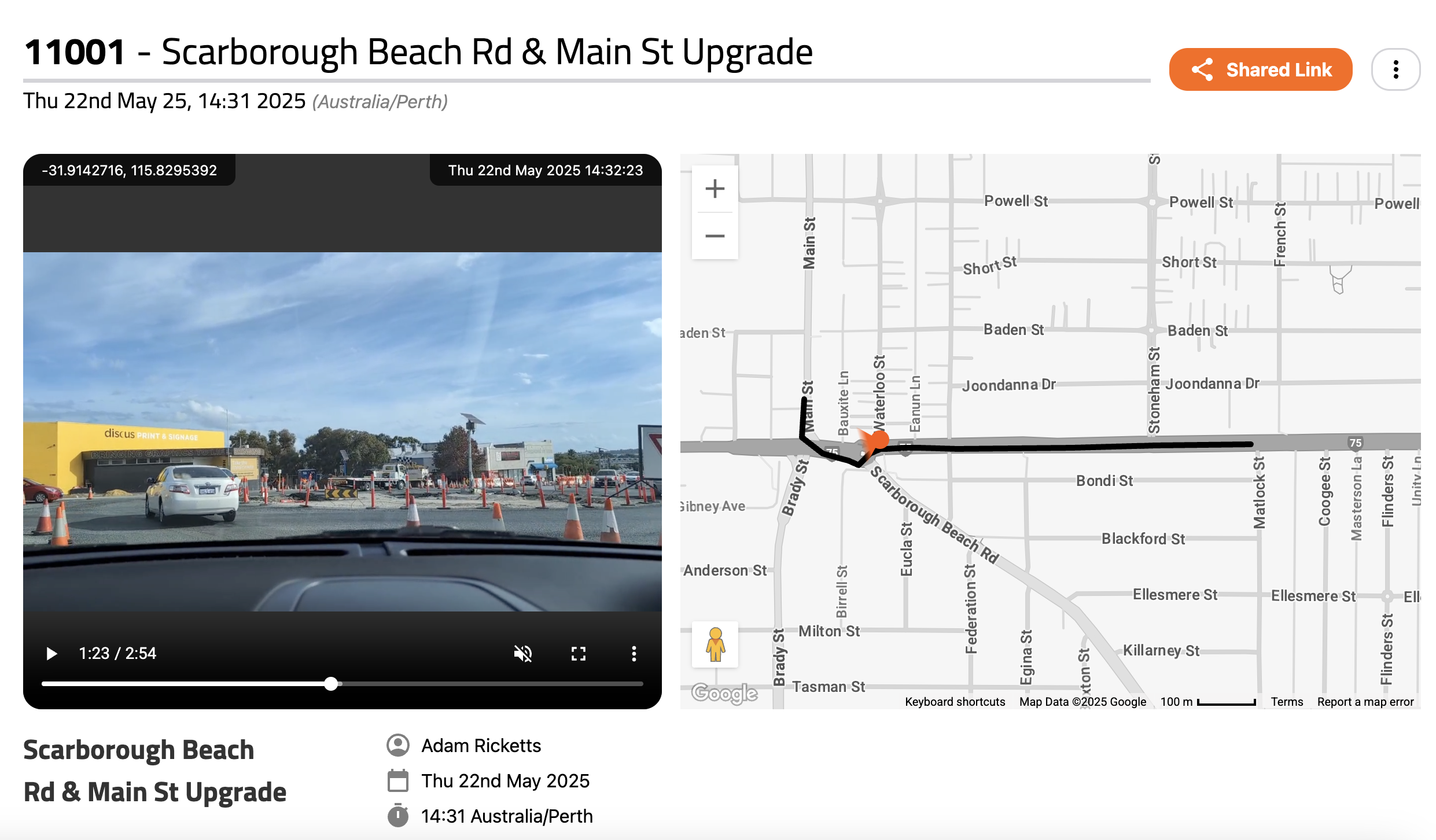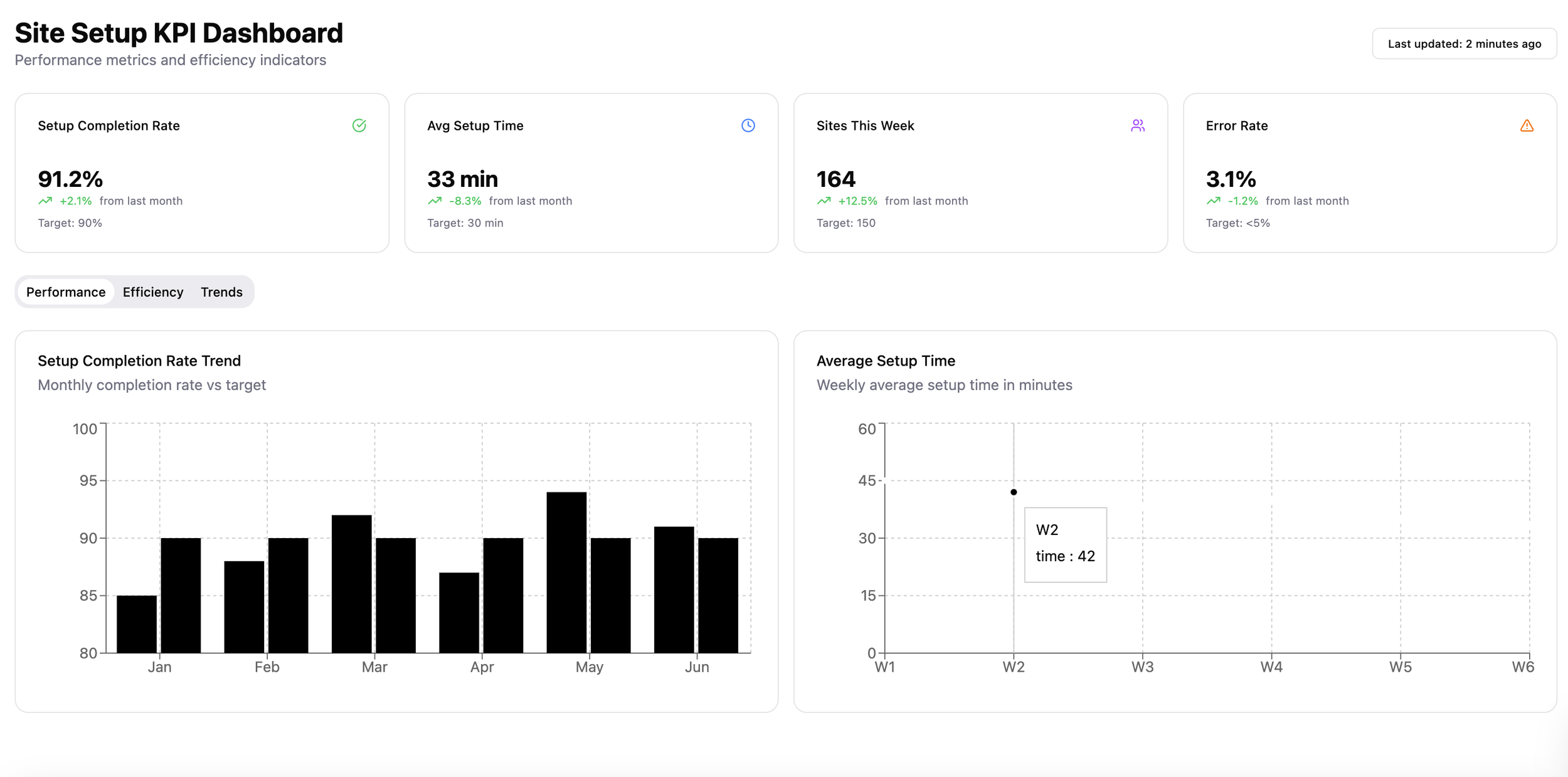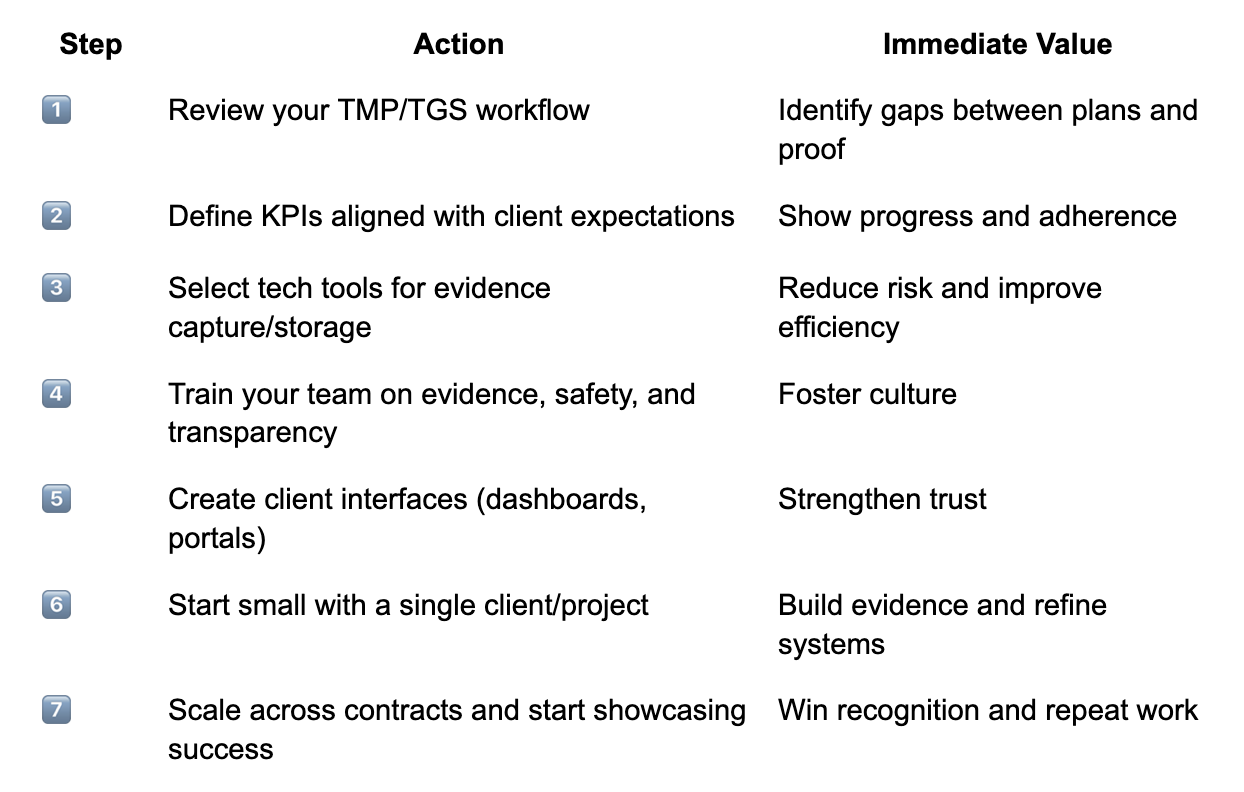What Clients Really Want from Their Traffic Management Partners
Insights Into What Councils, Utilities, and Road Authorities Expect — And How to Exceed Those Expectations
Introduction: It’s More Than Just Traffic Control
In today’s fast-paced infrastructure environment, being a Traffic Management partner isn't simply about placing cones and signage—it's about building trust, demonstrating accountability, and delivering seamless project outcomes. Councils, utilities, and road authorities are increasingly demanding more from contractors. They want transparency, watertight compliance, proactive communication, and tangible evidence demonstrating adherence to plans and safety standards.
Delivering on these expectations doesn’t just meet requirements—it establishes you as a dependable, high-calibre partner.
1. Transparency: Being Open, Visible, and Trustworthy
What Clients Expect
Clients operate on tight budgets, legal obligations, and public scrutiny. To them, knowing what’s happening on-site—right now—is essential. They expect:
Real-time communication on site setups, changes, and potential issues
Operational visibility, enabled through scheduled site walkthroughs or digital documentation
Honesty about setbacks, with proposed recovery actions rather than excuses
Why It Matters
Transparent operations help avoid surprises like go-slow complaints or public backlash. They:
Build confidence and reduce oversight costs
Encourage collaboration, instead of adversarial “us vs them” dynamics
Facilitate early problem-solving when issues are flagged
How You Can Stand Out
Use live dashboards or maps showing site progress, damages, and incidents
Enable secure, client-accessible portals with daily photo or video logs
Share site diaries backed by timestamped evidence
Invite clients to regular site tours or briefing calls, enhancing accountability
2. Compliance First: Following TMP/TGS — No Compromises
What Clients Expect
Compliance isn’t optional—it’s mandatory. Clients expect contractors to:
Submit robust TMPs and TGSs aligned with jurisdictional and industry standards
Follow those plans meticulously, without cutting corners
Implement risk assessments and contingency planning as required
Why It Matters
Non-compliance can lead to:
Fines and shutdowns (government audits are increasing)
Public incidents that damage both reputations
Legal exposure and financial liability
Loss of future tender eligibility
How You Can Stand Out
Appoint a dedicated compliance officer for larger projects
Use templates based on the latest Austroads and state best-practice guides
Run internal compliance audits, reviewing finished setups against plans
Offer pre-submission plan checks on TMPs and TGSs to reduce approval delays
3. Evidence & Verification: Proving You Did What You Said You’d Do
What Clients Expect
Words and plans are useful, but proof cements trust. Clients expect you to show rather than just say you’ve complied:
Video documentation of site drive-throughs capturing traffic control device placement and set-up
GPS-tagged, timestamped checks that link evidence to specific obligations
Why It Matters
Evidence serves multiple purposes:
Closes the gap between plans and actual execution
Protects both parties during investigations or claims
Reduces disputes by providing objective documentation
Demonstrates professionalism in tenders and audits
How You Can Stand Out
Institute standardised media capture protocols (e.g. front, mid, and exit views)
Deliver consolidated compliance reports with audit trails to clients
Store records securely for the required retention period
Provide client-accessible historical comparisons, showcasing past compliance
4. Proactive Communication: Stop Reactive ‘Sorry’ Emails
What Clients Expect
If delays happen or risks emerge, clients don’t want to hear about it after the fact—they expect notification in advance. This includes updates such as:
Works running behind schedule
Unexpected traffic behaviour or safety risks
Emergency changes to TMP/TGS
Public or stakeholder complaints
Why It Matters
Lack of proactive communication leads to:
Public disruption and complaints
Potential safety incidents
Client distrust due to chaos or poor coordination
Contracts being penalised or terminated
How You Can Stand Out
Establish communication protocols for alerts and updates
Offer daily or weekly updates summarising site status and noteworthy issues
Use tools with real-time notifications for deviations or risk exposures
Include recovery plans along with any incident or disruption notifications
5. Safety Culture: It's About Values, Not Procedures
What Clients Expect
Safety expectations go beyond formal checklists. Clients look for a culture that prioritises safety, as evidenced by high engagement and ownership on-site.
Why It Matters
An embedded safety culture yields:
Fewer incidents and a stronger reputation
Lower premium insurance costs
Higher crew morale and reduced turnover
Trust from clients in high-risk jobs
How You Can Stand Out
Hold weekly crew safety briefings, including client-facing updates
Train site staff to pause and report when they notice non-compliance
Deploy anonymous hazard reporting tools for crew safety issues
Include safety culture evidence in client presentations and bids
6. Reliability & Efficiency: Doing What You Say, When You Say
What Clients Expect
Clients don’t just want safety—they want reassurance that you’ll deliver on time, within budget, and to specification. That means:
Measurable performance via KPIs
On-time setup and removal of traffic controls
Clear recovery plans if delays do occur
Why It Matters
Reliability and responsiveness lead to:
Increased strategic value to clients
Opportunities for winning more tenders
Long-term contracts and preferred supplier status
How You Can Stand Out
Track setup times, compliance completion vs plan
Share SLAs detailing response time windows to changes or complaints
Use efficiency metrics in client communications or newsletters
Highlight system improvements (e.g. new equipment, software, training) in weekly client briefs
7. Technology Integration: Modern Tools for Modern Challenges
What Clients Expect
Clients appreciate when contractors embrace tech that improves compliance, safety, and visibility, including:
GIS mapping of worksites
Dashboards for compliance, issue tracking, and evidence
Integration into client project management systems
Why It Matters
Technology delivers:
Greater accuracy and real-time reporting
Reduced admin burden on both sides
A foundation for smart scaling and tender competitiveness
How You Can Stand Out
Offer data-sharing APIs to client systems
Provide dashboard access that tracks reminders, setup vs TGS, and alerts
Suggest smart tools like predictive analytics or safety sensors
Demonstrate quality site setup using innovative video capture of drive-throughs
Showcase tech success stories in pitches or case studies
8. Continuous Improvement: Never Stop Getting Better
What Clients Expect
Today, clients expect partners to improve over time. That means:
Learning from every project
Systematically addressing recurring issues
Sharing process improvements or improvements in results
Why It Matters
Continuous improvement leads to:
Lower incident rates
Higher efficiency, lower costs
Clients viewing you as a strategic partner, not just a vendor
How You Can Stand Out
Maintain a lessons-learned database with shared updates
Host quarterly performance reviews with client reps
Identify and publicise applied learnings from projects
Launch internal innovation challenges for safety or compliance
Real-World Impact: What It Looks Like in Practice
Case Study: Council Project Demand Response
A council-managed road resurfacing engaged a contractor who provided a public dashboard showing current TMP/TGS status, photos, and timelines. When a ratepayer flagged a lane issue, the client pulled relevant data instantly and resolved the complaint within an hour.
Result: Client praised the contractor for transparency and efficiency, leading to a second contract award.
Case Study: Utility Inspection Reward
A utility inspected 50 roadworks sites across two months. One contractor had full audit trails with drive-through video, photo evidence, and quick defect fixes. The inspection report praised them as exemplary.
Result: They received an extension contract and an increased allocation for future works.
Getting Started: Road Map to Client Excellence
Here’s how to begin elevating your capabilities today:
Final Thoughts: Trust Doesn’t Happen by Accident
Your clients want more than compliance. They want confidence, ease, visibility, and the peace of mind that comes from knowing you’re on their side. So don’t just meet expectations—anticipate them.
When you deliver TM projects with transparency, proactive communication, detailed evidence and continual improvement, you become not just a supplier, but a strategic asset.
That’s how you win the work today—and how you build a business client’s trust tomorrow.



